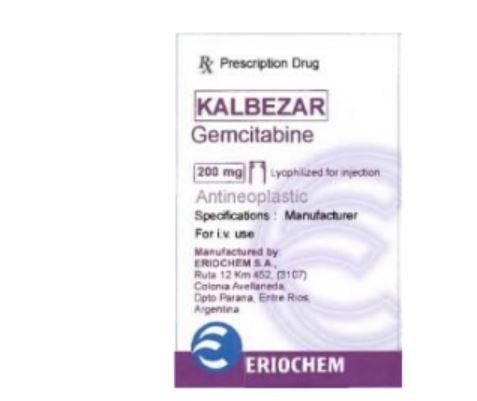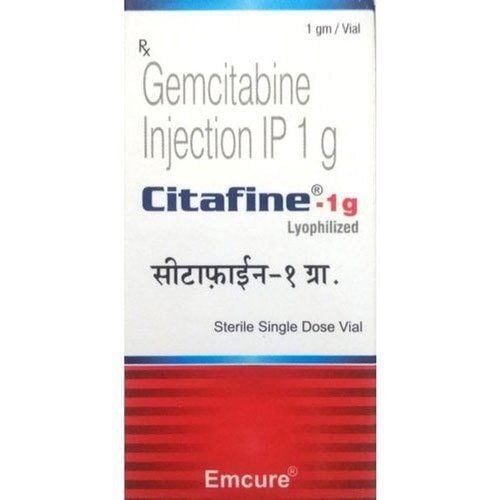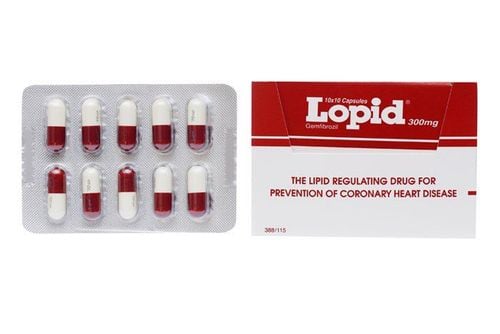This is an automatically translated article.
The article was written by Master - Doctor Mai Vien Phuong - Head of Department of Gastrointestinal Endoscopy - Department of Medical Examination & Internal Medicine - Vinmec Central Park International General HospitalProgress in the fight against pancreatic cancer has been hampered by many factors. One of them is the inability to detect the disease early in the vast majority of patients. Includes focus on two warning signs - post-pancreatitis diabetes mellitus and excess fat deposition in the pancreas. These two entities have the potential to be incorporated into future screening strategies for the early detection of pancreatic cancer.
1. Frequency of pancreatic cancer
The incidence of pancreatic cancer has been increasing since the 1990s. About 90% of pancreatic cancers are unresectable at the time of diagnosis, so early detection of pancreatic cancer is very important. to reduce the burden of this disease. Developing an accurate test for the early detection of individual pancreatic cancers would significantly improve survival of patients.2. Persistent hyperglycemia and the risk of pancreatic cancer
A 2011 meta-analysis of 35 cohort studies found that people with diabetes had a 1.9 times higher risk of pancreatic cancer than those without diabetes. Then a 2018 study from the Mayo Clinic demonstrated that the glycemic index holds promise as a marker of pancreatic cancer. Fasting blood glucose profiles over a 60-minute period were constructed for patients diagnosed with pancreatic cancer (as well as matched controls). The first time hyperglycemia occurred 30 to 36 months before the diagnosis of pancreatic cancer and reached the diabetic threshold 6 to 12 months before the cancer diagnosis, the authors found. Furthermore, fasting blood glucose concentrations increase with tumor volume, with the smallest tumor volume associated with hyperglycemia being 1.1 - 2.0 mL (significantly smaller than the mean tumor volume). average is 11.5 mL at diagnosis of pancreatic cancer). In theory, diagnosing pancreatic cancer when the tumor is small could significantly increase cure rates and long-term survival.
3. Get rid of excess fat and reduce the risk of pancreatic cancer
In a 2003 prospective cohort study of more than 900,000 adults, the relative risk of pancreatic cancer for those with obesity (body mass index > 40 kg/m2) was 2, 76 (95% CI 1.74 to 4.36) for women and 2.61 (95% CI 1.30 to 5.40) for men.A 2009 prospective cohort study of more than 450416 adults estimated that overall overweight or obesity (body mass index 25 kg/m2) accounts for 8% of the population at risk. risk of pancreatic cancer, making it the second largest risk in the population (after smoking) of all modifiable factors studied. Later, visceral fat (as evidenced by waist circumference) was recognized as a more accurate measure of excess body fat.
Significant association between pancreatic cancer risk and visceral fat:
Several prospective studies have shown a significant association between pancreatic cancer risk and visceral fat. These studies (including 787,356 adults) were meta-analyzed in 2012, and the risk of pancreatic cancer was estimated to increase 1.1-fold (95% CI 1.05 to 1.18) with each 10cm increase in waist circumference. Based on the best available evidence regarding both body mass index and waist circumference, the World Cancer Research Fund and the American Institute of Cancer have concluded that the link between excess fat and cancer pancreas is causal. However, a causal relationship is also recognized in relation to excess fat and cancer in several other organs (esophagus, liver, colorectal, breast, endometrium, kidney). Because both general and abdominal fat have low specificity, they are not particularly useful for early detection of pancreatic cancer.
Fat deposition in the pancreas contributes to the formation of pancreatic tumors:
Recently, localized fat in the pancreas - known as pancreatic fat deposition - has emerged as a precursor to the formation of pancreatic tumors. pancreatic tumor. The relationship between pancreatic fat deposition and pancreatic cancer or premalignant lesions has been investigated in a number of studies and has been systematically reviewed in a systematic review and meta-analysis of five years. 2020 by Sreedhar et al. A total of 13 retrospective studies (including 2178 individuals) were included.
The overall prevalence of fatty pancreas in people with pancreatic cancer is 52% (95% confidence interval 38 to 66%). Furthermore, the incidence of fatty pancreas in individuals with pancreatic cancer or premalignant lesions was 2.8 times higher than in controls (hazard ratio 2.78; 95% confidence interval). 1.56 to 4.94). High pancreatic fat deposition was also associated with prevalence and increased disease mortality in two single-center studies. In addition, there is evidence for a consistent association between the presence of pancreatic premalignant lesions and high pancreatic fat deposition, independent of fatty liver disease, abdominal fat, and adiposity. shared.

One study found that fat deposition in the pancreas was significantly increased in people with papillary carcinoma of the pancreas. ducts (n = 85), compared with those matched for age, sex, and diabetes status without pancreatic cysts (n = 85). The study took into account two types of pancreatic cancer that can develop in people with intraductal papillary mucinous carcinoma (invasive carcinoma in index lesions and concomitant pancreatic ductal carcinoma). at a site other than intraductal papillary mucinous carcinoma) and taking into account advanced progression. Grade dysplasia in index lesions is relatively easy to detect and monitor. Increased pancreatic fat deposition during follow-up may be particularly helpful in identifying individuals with intraepithelial papillary mucinous carcinoma containing concomitant pancreatic ductal carcinoma.
Pancreatic fat deposition and pancreatitis:
Pancreatic fat deposition has also been studied in the context of pancreatitis - a major risk factor for pancreatic cancer. A cross-sectional study by Stuart et al investigated 119 individuals after they developed pancreatitis and 38 healthy volunteers. It found that excess fat deposition in the pancreas (as determined using chemical shift encoded magnetic resonance imaging) in people after an attack of pancreatitis (both acute and chronic). count) was significantly greater than in healthy volunteers; in both the crude analysis and after adjusting for age, sex, ethnicity, skin visceral fat volume ratio, glycated hemoglobin, triglycerides. Notably, two other common extrapancreatic fat phenotypes - liver fat and skeletal muscle fat - were not significantly different between the groups.
Excess pancreatic fat deposition is associated with worse outcomes in hospital admissions for acute pancreatitis:
Several other cross-sectional studies have shown that excess pancreatic fat deposition is associated with outcomes worse on admission for acute pancreatitis. People with chronic pancreatitis alone (n = 58) had significantly higher fat deposition in the pancreas than controls (n = 60) in a cross-sectional study from the United States. In addition, the severity of pancreatic ductal changes (based on the Cambridge classification) in individuals with chronic pancreatitis was not related to excess fat deposition in the pancreas.
It is worth noting that study groups were only compared in the raw analysis in that study, despite the fact that there were significant differences between groups in terms of age, body composition, alcohol consumption and smoke. An earlier study from the United States showed that subjects with chronic pancreatitis alone (n = 35) had significantly higher pancreatic fat deposition than controls (n = 50) in a post hoc analysis. period was limited to non-obese subjects (body mass index <30 kg/m2).
Association between pancreatic fat deposition and chronic pancreatitis:
A long-term study from Japan sought to investigate the temporal relationship between pancreatic fat deposition and chronic pancreatitis . A total of 9,933 people without pancreatitis were examined in 2008 and followed for 4 years as part of their medical examination. The presence of fatty pancreas disease at baseline was associated with a 3.9-fold increased risk of developing acute pancreatitis during follow-up (odds ratio 3.9; 95% CI 2. ,0 to 7.7), after adjusting for age, sex, body mass index, glycated hemoglobin, systolic blood pressure, alcohol abuse, smoking, and other variables. However, it is worth noting that transabdominal ultrasound was used in this study, which is a suboptimal method for diagnosing both chronic pancreatitis and fatty pancreatic disease. In addition to those with pancreatic premalignant lesions or a history of pancreatitis, it can be speculated that those with incidentally discovered fatty pancreatic disease may benefit from regular monitoring for detection early pancreatic cancer.

4. Difficulty in mass pancreatic cancer screening
Because fatty pancreas disease is so common in the general population (prevalence 16.1%; 95% confidence interval 13.3 to 18.8) and the modern sequential evaluation of the pancreas ( ie using magnetic resonance imaging) is expensive. Screening people without fatty pancreatic disease for pancreatic cancer is unlikely to meet current cost-effectiveness standards. It is expected, however, that future studies will identify a subgroup of people with fatty pancreatic disease in the general population at high risk for sporadic pancreatic cancer.The complex nature and relative rarity of pancreatic cancer make it difficult to perform screening in people without a family history of the disease. In fact, a 2019 evidence-based report by the American Foundation for Disease Control and Prevention deemed screening for pancreatic cancer in asymptomatic adults as cost-effective.
However, growing evidence forces us to consider middle-aged and older adults with post-pancreatitis diabetes and/or incidentally diagnosed fatty pancreas because they are at increased risk of developing cancer. pancreas is very high. A comprehensive understanding of the complex relationship between diabetes after pancreatitis and fat deposition in the pancreas will provide useful insights into the early detection of pancreatic cancer.
Currently, Vinmec International General Hospital has been implementing cancer screening packages. At Vinmec, there are a full range of modern diagnostic facilities such as: PET/CT, SPECT/CT, MRI, myelogram blood test, histopathology, immunohistochemistry test, gene test, stool biology test death, as well as a full range of targeted drugs, the most advanced immunotherapy drugs in cancer treatment. Multimodal cancer treatment from surgery, radiation therapy, chemotherapy, hematopoietic stem cell transplantation, targeted therapy, immunotherapy in cancer treatment, new treatments such as autoimmunotherapy body, heat therapy,...
After having an accurate diagnosis of the disease and stage, the patient will be consulted to choose the most appropriate and effective treatment methods. The treatment process is always closely coordinated with many specialties: Diagnostic Imaging, Biochemistry, Immunology, Cardiology, Stem Cell and Gene Technology; Department of Obstetrics and Gynecology, Department of Endocrinology, Department of Rehabilitation, Department of Psychology, Department of Nutrition, ... to bring the highest efficiency and comfort to the patient. After undergoing the treatment phase, the patient will also be monitored and re-examined to determine whether the cancer treatment is effective or not.
Thanks to modern facilities, a team of qualified doctors, perfect medical services, have brought confidence, health and good quality of life to patients who come to visit and treat diseases at the hospital. Vinmec.
Please dial HOTLINE for more information or register for an appointment HERE. Download MyVinmec app to make appointments faster and to manage your bookings easily.
Reference source: Petrov MS. Post-pancreatitis diabetes mellitus and excess intra-pancreatic fat deposition as harbingers of pancreatic cancer. World J Gastroenterol 2021; 27(17): 1936-1942 [DOI: 10.3748/wjg.v27.i17.1936]













